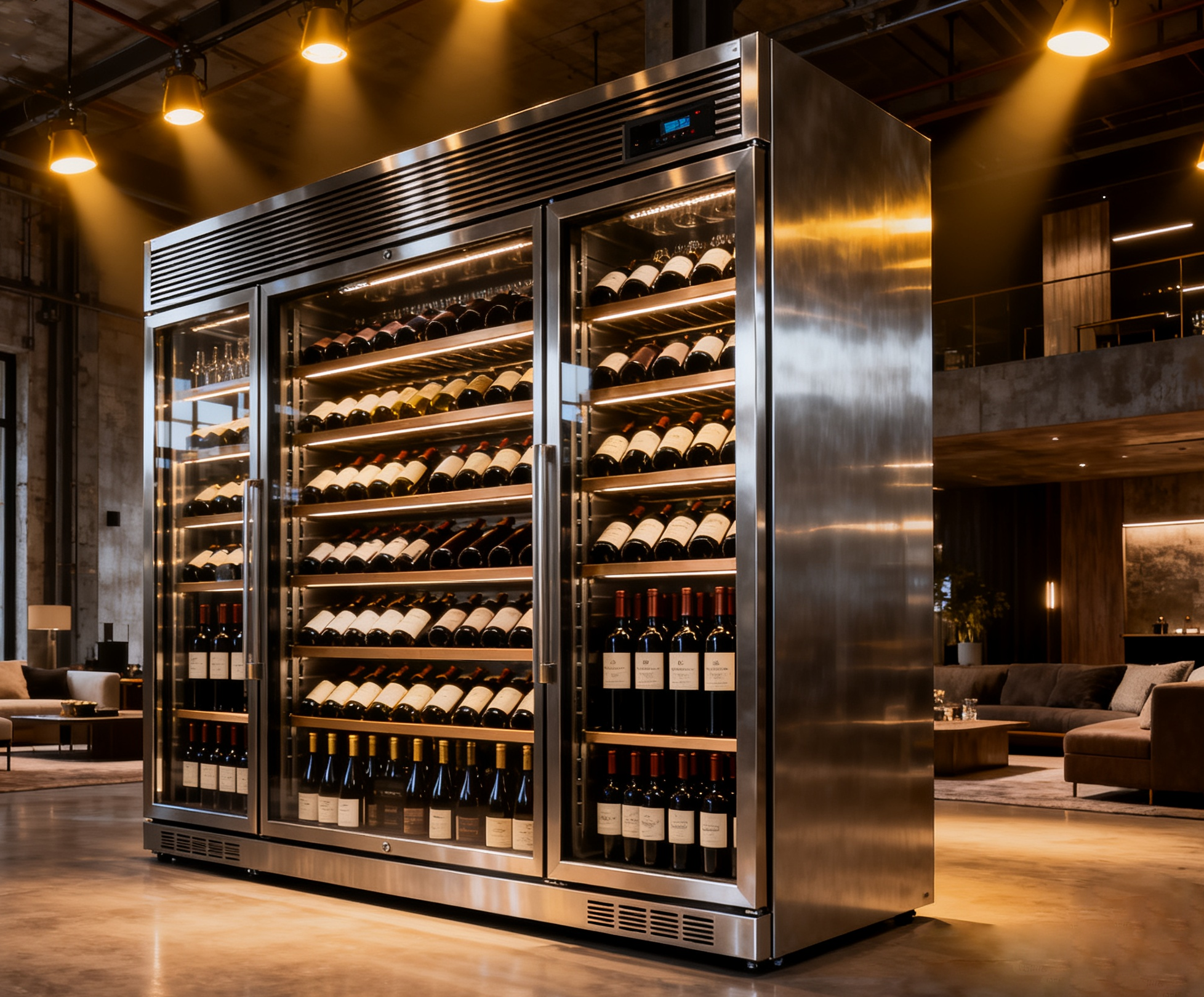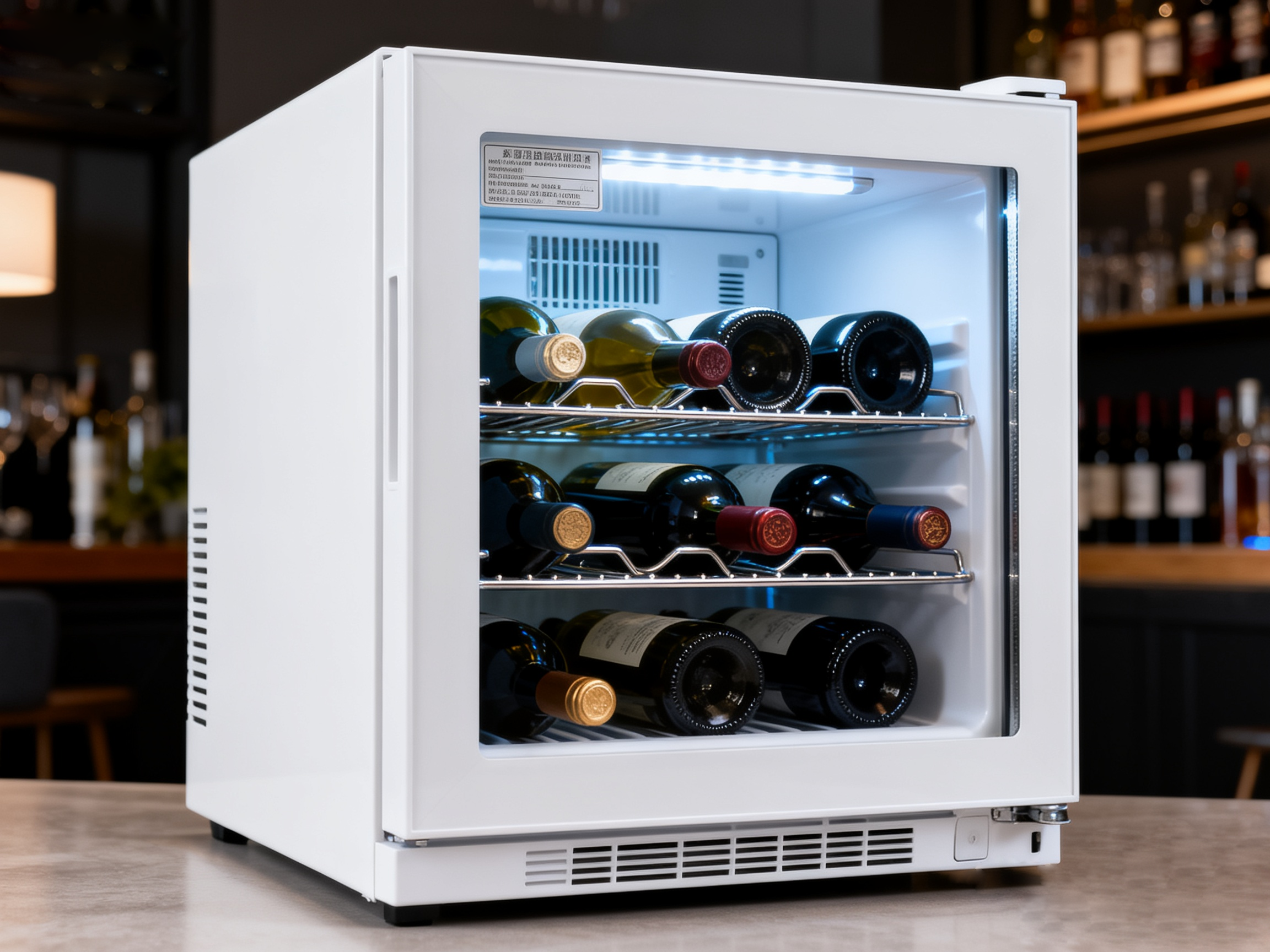FerroTec Technology Revealed: How Does a thermoelectric cooler Protect a Bottle of Fine Wine?
"70% of a wine's quality depends on brewing, 30% on storage." If a bottle of fine wine is stored in an environment subject to large temperature fluctuations, unstable humidity, or frequent vibrations, its flavor will deteriorate in just a few months—fruit aromas fade, tannins become harsh, acidity becomes unbalanced, and even "oxidized" or "musty" notes develop. Therefore, professional wine storage is no longer simply about keeping it in a cool place; it demands stringent temperature, humidity, and spatial stability. For this reason, wine cabinets have become a standard feature in private collections, high-end residences, hotels, and even wine specialty stores. They are no longer simply "cups for storing wine" but rather miniature wine cellars that integrate temperature and humidity control, along with intelligent technology.
1. Traditional compressor wine cabinet: compressor refrigeration technology

Let's first consider the most common compressor-type wine cooler on the market. This type of wine cooler primarily cools wine through the compression and expansion cycles of a refrigerant. While they offer high cooling capacity and large storage capacity, they also present issues with noise, vibration, and temperature fluctuations. They are more suitable for commercial (large-capacity) applications and spaces where quiet operation is less critical.
1. Large temperature fluctuations
The compressor operates intermittently, automatically shutting down when the set temperature is reached and restarting when the temperature rises again. This "start-stop cycle" causes frequent temperature fluctuations inside the cabinet. Long-term exposure to fluctuating temperatures can affect the sealing of the wine due to thermal expansion and contraction, accelerating micro-oxidation and damaging its flavor.
2. Mechanical vibration affects the wine
When the compressor is running, it will generate constant vibration, stirring up the sediment in the wine (especially old red wine), interfering with its natural aging process. Studies have shown that long-term vibration will slow down the polymerization of tannins and make the taste more astringent.
3. Noise and space limitations
Compressor-type wine cabinets are noisy and unsuitable for living areas like living rooms, bedrooms, or open bars. Furthermore, due to their high heat dissipation requirements, they require ample space for ventilation and heat dissipation, making them difficult to adapt to small wine storage spaces.
2. TEC smart wine cabinet: thermoelectric cooling technology

Compared to compressor-based wine coolers, the TEC smart wine cooler utilizes a thermoelectric cooler as its core cooling element. The "cold end" of the fin, located on the inner wall of the wine cooler, absorbs heat from the air inside the cooler when powered, lowering the internal temperature. The "hot end," located at the back or top of the wine cooler, dissipates heat outside the cooler via heat sinks and a fan (or natural convection). A high-precision temperature sensor is also integrated within the wine cooler to monitor the internal temperature in real time and feed this data back to the control system. The control system dynamically adjusts the current level and start/stop frequency based on temperature differences, achieving high-precision temperature control within ±0.3°C to 0.5°C.
1. High-precision temperature control (±0.3~0.5℃)
The thermoelectric cooling system, combined with high-precision temperature sensors and a PID control algorithm, achieves stepless temperature control, preventing drastic temperature fluctuations caused by startup and shutdown. Test data shows that the TEC smart wine cabinet can control temperature fluctuations within a range of ±0.3-0.5°C, approaching the standard of professional wine cellars.
2. Quiet operation (<28dB)
No compressor is required, and it runs quietly. It can be placed in bedrooms, studies, audio-visual rooms and other scenes with high requirements for quietness.
3. Two-way temperature control
Thermoelectric cooling technology supports two-way conversion between cooling and heating. When the ambient temperature is too low in winter, the system will automatically switch from cooling to heating mode.
4. Compact and easy to integrate
Thermoelectric cooling chips are small in size and compact in structure, making them easy to integrate into embedded or special-shaped wine cabinets, meeting the dual demands of modern wine cabinets for appearance design and high space utilization.
5. Multiple temperature zones with independent control
It supports independent control of multiple temperature zones and can simultaneously meet the storage needs of different types of wine such as red wine (12~18℃), white wine (6~10℃) and champagne (6~8℃), so that each type of wine is in an ideal storage environment.
Overall, the TEC smart wine cabinet is compact and lightweight, operates quietly, and offers precise temperature control, providing a stable and gentle storage environment for all types of wine. Although its cooling capacity is relatively limited (suitable for small to medium-sized wine cabinets with less than 60 bottles), its multiple advantages over compressor-based wine cabinets have led to its widespread adoption in private homes, high-end restaurants, wine shops, and mobile wine storage, making it an ideal choice for those seeking high-quality wine storage.
As a leading global supplier of thermoelectric cooling technology, FerroTec offers high-performance thermoelectric cooler for the wine storage industry. Power, materials, and design can be customized, helping brands create high-quality TEC smart wine cabinets. For product details or to request a solution, please contact us at 0571-89712612.



